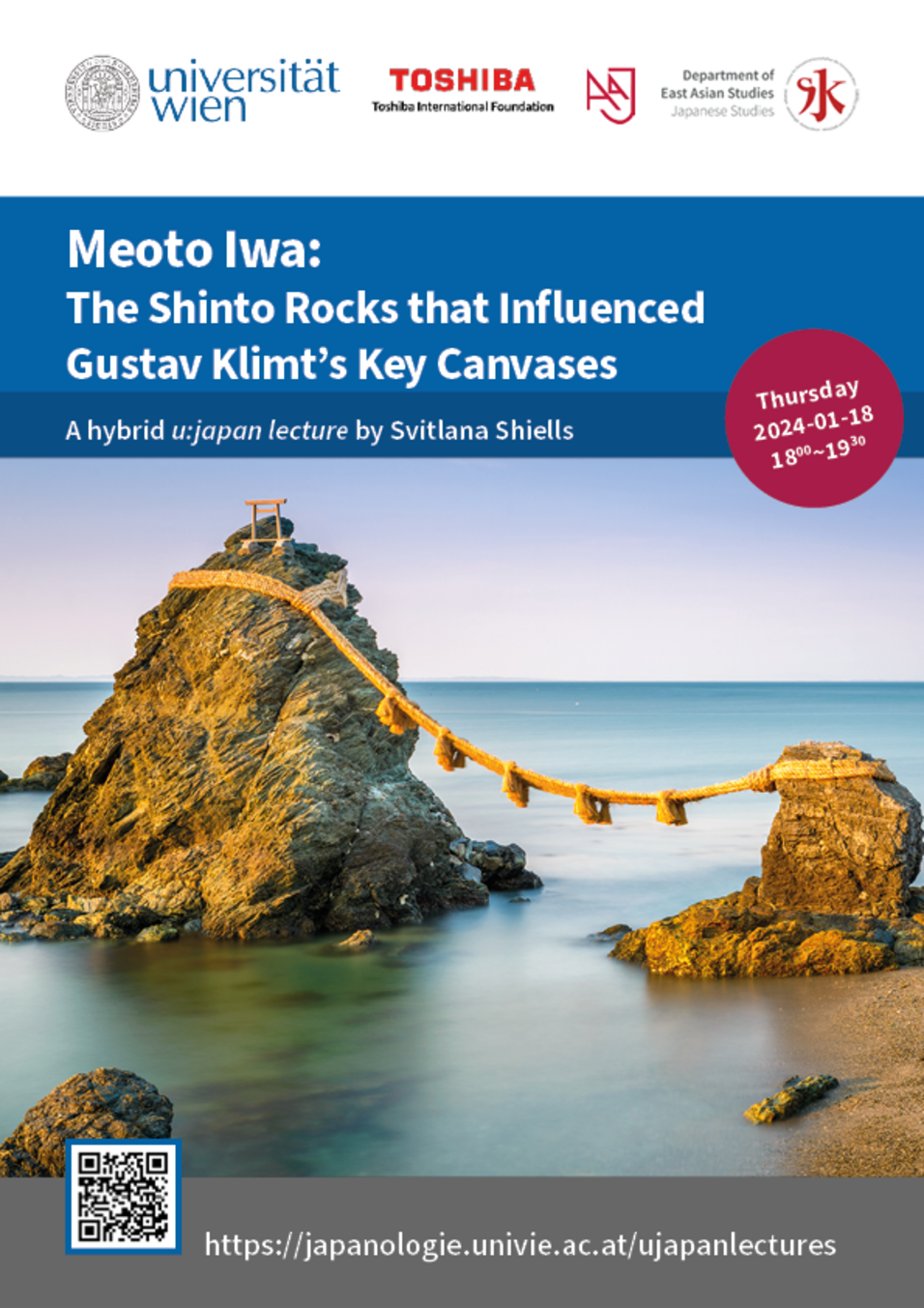| Abstract |
The two rocks of the famous Shinto monument Meoto Iwa, a symbol of divine marriage, have inspired many Japanese and foreign visitors. One of those so inspired was Austrian art collector Adolf Fischer, who developed a strong interest in Japanese art after visiting the Weltausstellung 1873 in Vienna. In his book "Bilder aus Japan", Fischer offers an arresting description of Meoto Iwa, accompanied by a small illustration. Gustav Klimt, who had a close and productive relationship with Fischer, not only knew his book but also—and not without Fischer’s help—assembled his own collection of Japanese art. This paper argues that Fischer’s engaging account of Meoto Iwa in the book (as well as undoubtedly in his private conversations with the artist) inspired a series of Klimt’s key paintings. At first, the modified version of the two rocks of Meoto Iwa appeared in the second Portrait of Emilie Flöge (1902), Klimt’s life-long friend and companion.
A few years later, Klimt, an ardent adherent of Symbolism, return to the gripping symbolism of Meoto Iwa in his key work The Kiss (1908), placing an embraced coupled on top of a large rock. This research illuminates stylistic, iconographic, symbolic, and even thematic parallels between the two paintings. Klimt’s interest in Shinto symbolism continued until the end of his life. The highly synthesized rock-like ‘construction’ that encapsulates human bodies—similar to kami that occupy rocks—reappears in his subsequent paintings The Virgin (1913), Death and Life (1910-11), The Bride (1918), etc. Offering an analytical approach and, accordingly, critically reevaluating and reexamining prevailing concepts, this lecture illuminates not only Klimt’s interest in Shinto and its symbolism but also elucidates that without taking in account the role of Japonisme in Klimt’s oeuvre it is impossible to fully understand the intricacy of his complex art.
| Bio |
Svitlana Shiells, a former professor of art history, has taught at a number of universities in Ukraine, America, and Austria (among them University of Maryland, College Park, American University, Washington, D.C., George Mason University (GMU), Fairfax, VA, Webster University, and Vienna). She completed her studies, including a Ph. D. in art history, in Ukraine. Dr. Shiells has also worked as a Research Associate at the National Museum of Asian Art, Washington, D.C, where she was Director of the Washington Cultural Fund. The focus of her research is Japonisme in Eastern and Central European modern art. Dr. Shiells has published widely and presented her research at numerous lectures and seminars, for instance, at Harvard University, Tokyo University of the Arts, the College Art Association, the Library of Congress, the Salzburg Seminar, and other art museums, as well as at conferences in London, Tokyo, Paris, Barcelona, Chicago, Montreal, Baltimore, Salzburg, Washington, D.C., Kharkiv, Budapest, Lviv, etc. Dr. Shiells is a recipient of fellowships in the field of art in the U.S., Ukraine, and Japan. Currently, as an affiliated faculty of GMU, she is living in Vienna, Austria and working on a monograph on Japonisme in Gustav Klimt’s art.
| Date & Time |
u:japan lecture | s07e10
Thursday 2024-01-18, 18:00~19:30
| Place & Preparations |
| Plattform & Link |
univienna.zoom.us/j/68870889769
Meeting ID: 688 7088 9769 | Passcode: 129471
| Further Questions? |
Please contact ujapanlectures.ostasien@univie.ac.at or visit https://japanologie.univie.ac.at/ujapanlectures/s07/#e10.


